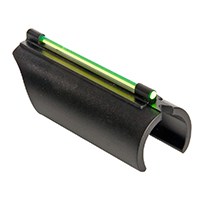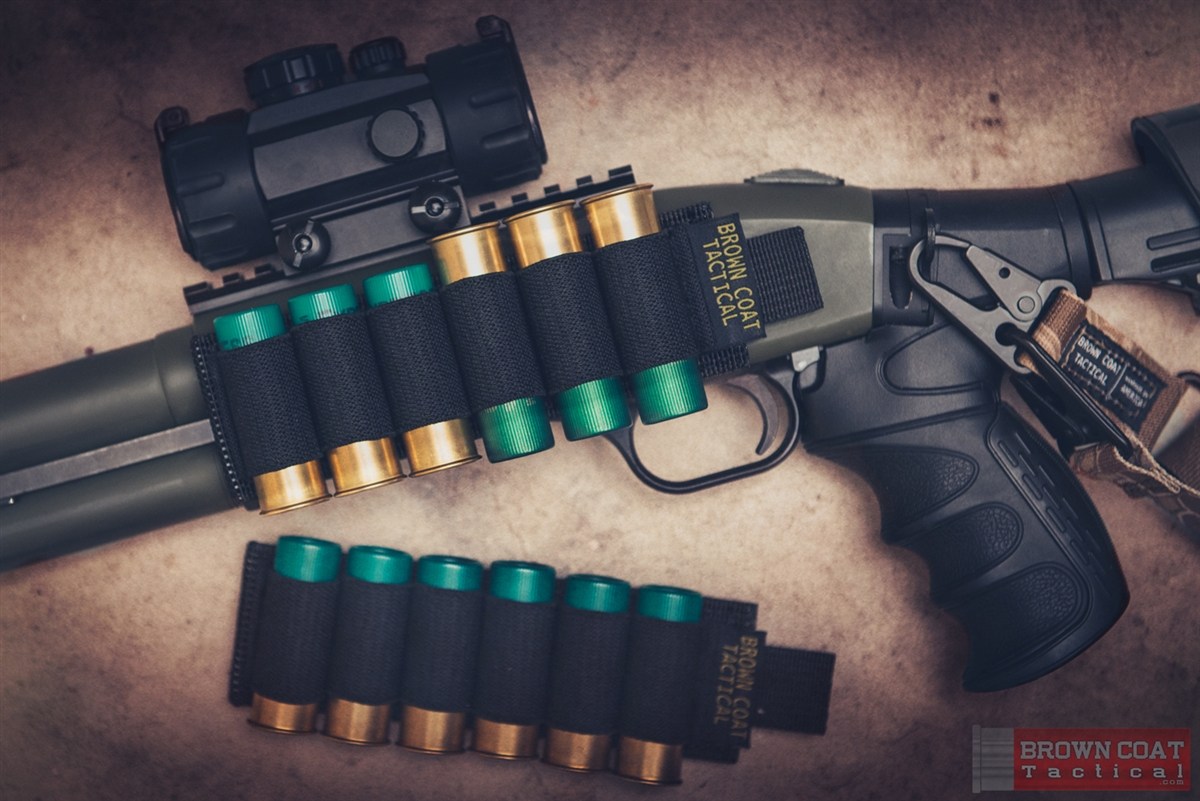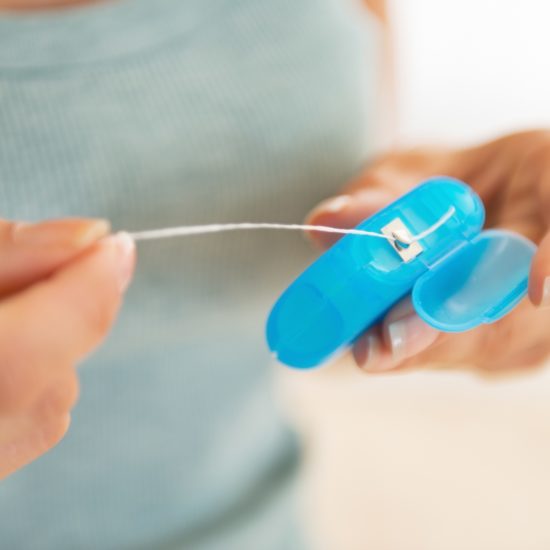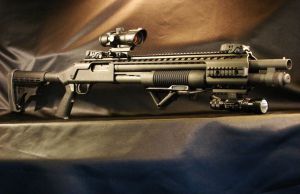
In Part 1 of the Introduction to Shotguns for Survival, we looked at what a shotgun could do for us in survival situations, the types of shotguns available, provided some information to help in choosing a shotgun, and began discussing simple modifications to improve its usability. Here are some more useful modifications.
Chokes and Porting
If your hunting barrel has a fixed choke, you can have it modified with an adjustable choke or to handle screw-in choke tubes. Another possible modification for the front of the barrel would be some “porting” to help with the recoil. This is a set of holes on the top part of the barrel at the end. Some of the gas escapes out of these holes, “pushing down” the barrel a bit. Both of these modifications are best done by a seasoned professional gunsmith.
Shotgun Sights
Look at what sights are currently installed. A vented rib on your hunting barrel is a plus; adding one is a pain, so it is better to buy the barrel already set up that way. Usually you will have either a bead at the tip of the barrel (with or without rib), or rifle sights. The bead is better for hunting moving game, particularly if it is mounted on a full length rib. But it can be made better by replacing it with a fluorescent rod which picks up ambient light and appears as a lighted dot. Some replace the existing bead; some are held on by magnets or glue, neither of which I would trust. If I was putting one on, I’d go with one which screwed on or clamped on. There is an electronic clamp-on sight called “Redring” which might be even more useful, but being electronic it is subject to being fried by an EMP or the battery going dead, and it is kind of bulky and wicked expensive. As for rifle sights on short barrels, they are useful for slugs. Some are available with fluorescent tubes to gather any ambient light or even Tritium capsules. The latter are great in the dark, but since they work on radioactive decay, eventually (10 years perhaps) they decay to where the glow is no longer useful, and they are much more expensive than plain or fluorescent tube sights. Another option is to install a picatinny rail on the barrel or the receiver for a scope or electronic sight. Shotgun stocks are designed so when your cheek is against it, you are looking right down the top of the barrel. If you change the sight height, it would be wise to add a riser to the stock (elastic or strap-on will do) so this capability is maintained.
Shotgun Ammunition Capacity
Ammunition capacity is limited, from three in some semi-autos to five in most pumps (which may come with a removable plug to limit it to three). This limitation is in part due to the size of the rounds, but also to comply with Game and Fish Department hunting regulations which limit you to three rounds loaded. Assuming no part of the mechanism is in front of the magazine tube, capacity can be extended by two or three rounds (or more) by removing the magazine tube cap, replacing the spring with a longer one, and screwing on a magazine tube extender. Do NOT have a magazine tube which sticks out further than the barrel, with the possible exception of one which has a reduced diameter end which extends past the barrel no more than 1/2″. Also, some extension tubes may need modification to avoid a gap between the standard and extension tube, which can cause rounds to get hung up. While we are in the magazine tube area, look at the “follower” which pushes on the rounds. Often these are thin “cups” which are the same color as the rest of the action and may be subject to cracking. It would be wise to replace it with a sturdier one, of a highly visible color so you can see you are empty, with a “bump” or “hole” on the end so you can easily feel that you are empty, and optionally a SHORT “tail” extending to the rear to reduce the chances of the spring kinking and failing to feed.
Even with a magazine tube extension, shotgun ammunition capacity is limited, so ways to carry more ammo readily available should be considered. Options include a carrier on one side (or even both) of the receiver, carriers which strap to the stock, a bandoleer (a handy way to carry a lot of shells, but may interfere with slings or backpacks), loops or various pouches or holders on your belt or a vest. The best options keep the shells organized, so you can quickly and smoothly move a round from carrier to the shotgun loading port without fumbling with its orientation. Note that they do make slings with ammo loops, but in my day, they were not nearly long enough or adjustable enough to be good slings regardless of how well they carried extra rounds. A quick search seems to indicate they are no better these days; because so much of the strap is taken up with shell holders, there is not enough plain strap left to offer any real adjustment.
Shotgun Controls and Spare Parts
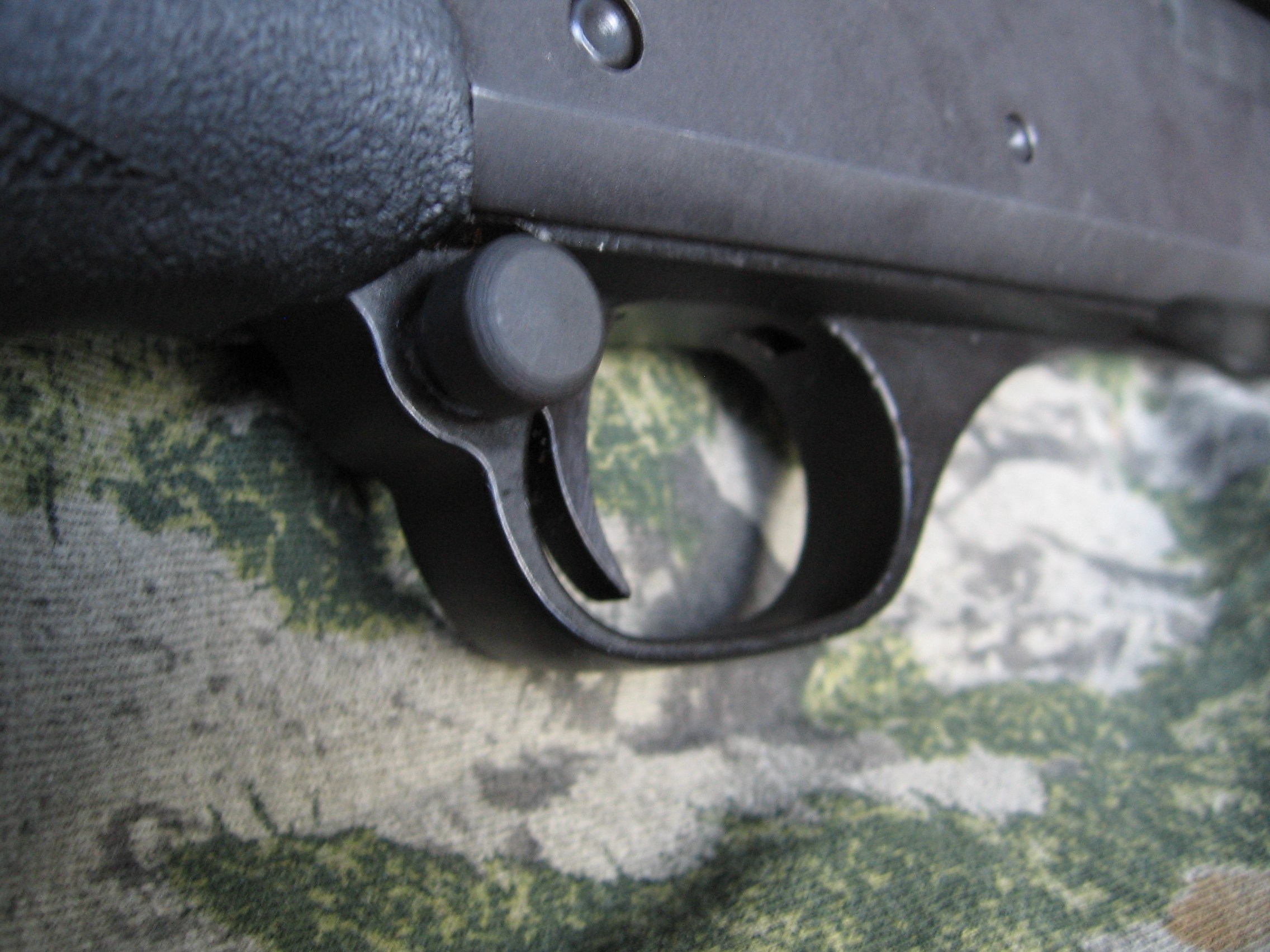
The most obvious improvement would be an oversized safety (for Remingtons and others with a cross bolt safety).
The controls often are appropriate for sport hunting, but can be improved to be more readily available for high stress situations. The most obvious improvement would be an oversized safety (for Remingtons and others with a cross bolt safety). For a semi-auto, you may also want an extended bolt handle and carrier release with cartridge loading ramp. You may want to research if there are any parts in your weapon which are inadequate or excessively subject to failure and thus should be replaced. For instance in later model 870s, besides the flimsy magazine follower, the extractor is often MIM (Metal Injection Molding) rather than being a machined part, so is more brittle. And the carrier latch spring is a bit underpowered. In addition to upgrading any parts which are not satisfactory, it might be wise to have a kit of small spare parts for your make and model in case any break, wear out, or get lost. Large parts are usually not at risk enough to be worth stocking.
Shotgun Lights and Lasers
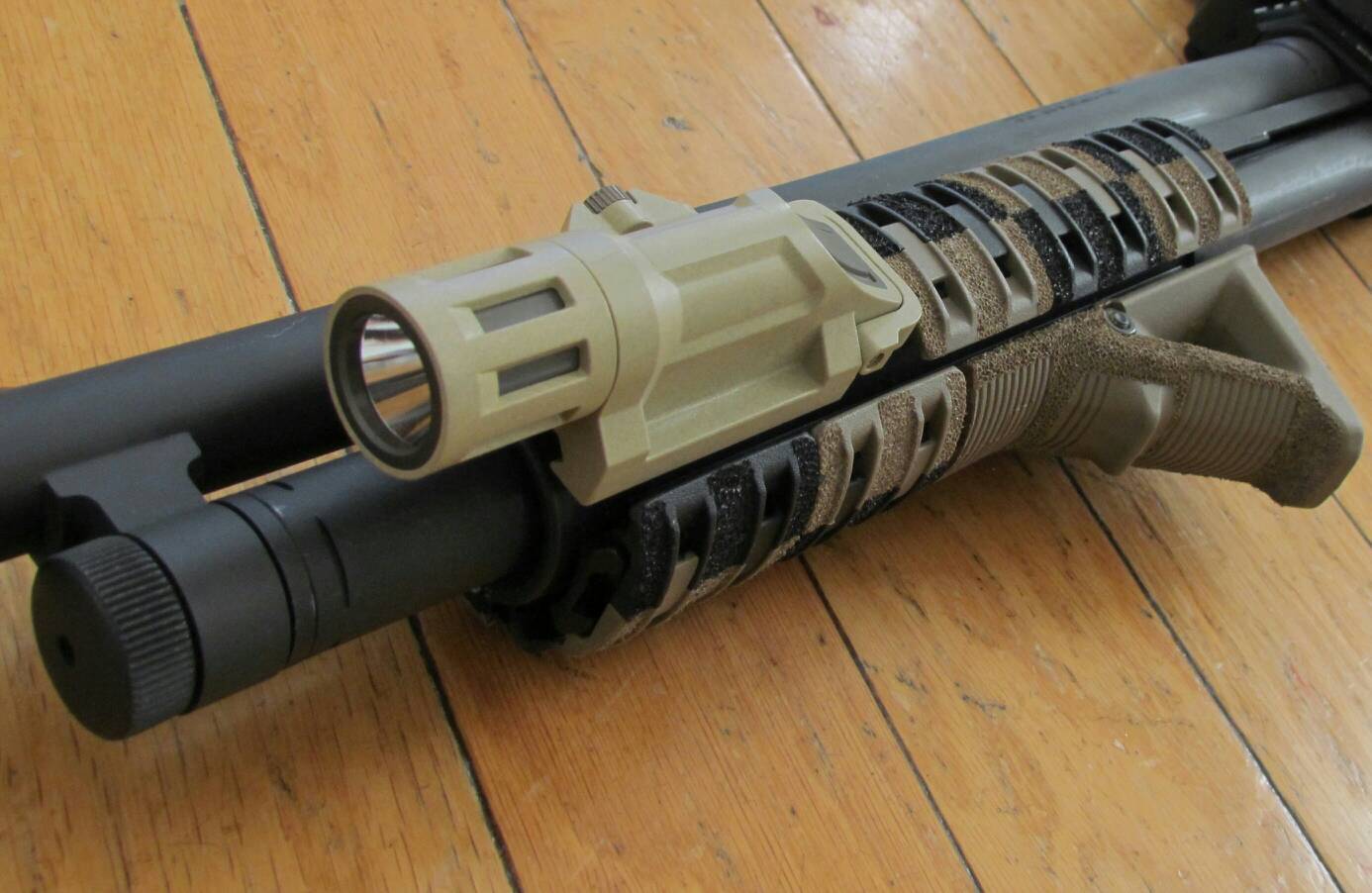
Finally, a lot of defensive use and some hunting is likely to be in the dark. Having a flashlight on the front is very handy. You can get a forend with a built-in light which is quite useful, but is a bit bulky. An alternative is a forend with built-in picatinny rails, which offers the ability to mount a laser sight, flashlight or a combination of these. But again, this adds to the bulk. A picatinny rail or other mount can be clamped to the barrel. If this must extend to the side, this can add bulk unless you already have a shell carrier on that side. If you have enough of the barrel sticking out past the magazine tube, having a rail for the light under the barrel there does not affect the bulk much, and if there is a laser there, it will line up with the bore better than one to the side. These sorts of things can be handy, but as with all electronics, they are at the mercy of dead batteries and EMP. Make sure you have solutions for both of these problems if you plan to go this route.
Ammunition
As mentioned, the key to the shotgun’s versatility is the variety of ammunition available. The first thing to consider is the “payload”; that which is sent towards the target. The first variable is material. It used to be that lead was the only real option, but of course that was determined to be an environmental hazard, particularly near water. Today you can get steel, bismuth or tungsten shot, and in fact, are required to use it for water fowl (ducks and geese). Of course, these shells can be higher in cost, and tend to wear out the barrel and can ricochet or spark if it hits something hard, so should ONLY be used for hunting waterfowl.
The next variable is projectile size and count. On one end of the scale, you have the single slug. This is good for hunting large game, and can extend the defensive range of the shotgun. There are plain, rifled, and sabot slug versions. The latter ones are a smaller diameter projectile encased in a “sleeve” (the sabot) which peels away in flight. The smaller diameter and lighter weight give you a bit more range. Then there is “buck shot”, which are the largest sizes of shot. These are adequate for medium and deer sized game (they get their name from a “buck”, or male deer), but more often they are used for defense. Most famous is “#00″ (double aught) buck, which is highly touted for defense by the movie and TV industry. I don’t like it, since there are only a few pellets (9 is common in 12ga). It might be useful against a barricaded attacker, but a slug would be better for that, and the #4 buck (the smallest common buck shot) is generally considered a better choice for defense. The pellets are still good-sized (0.24”) and there are a lot more of them. Of course, today there are some specialty defense rounds, but they are quite expensive and don’t seem to be significantly more effective than good old buck shot.
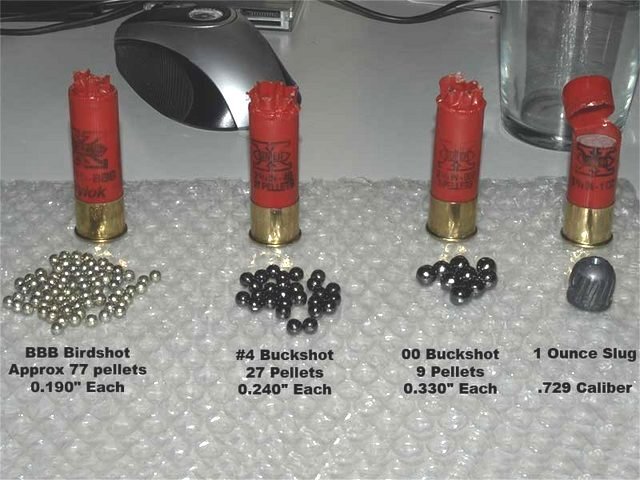
The #4 buck (the smallest common buck shot) is generally considered a better choice for defense.
For small game and birds, smaller sizes of shot are necessary. Like buck shot, the size is specified by the pound sign and a number, but followed by the word “shot” rather than “buck”. #4 shot and #4 buck are completely different sizes. To get an idea of the size of bird shot, subtract the size from 17 to get the diameter in hundredths of an inch. For instance, #4 shot is 17 – 4 or 0.13″. Common sizes range from #2 to #8 although there are larger (B = #0, BB, and so on) and smaller sizes. #6 is perhaps the most versatile, being adequate for all small game and birds except geese and high-flying ducks (needs a bigger size shot to maintain effectiveness at long-range), and doves and quail (needs smaller shot for a denser pattern). If you are going after a specific target, you can use exactly the right size shot, but in a survival situation, versatility is critical. Note that because steel is so much less dense than lead, you need a shot size two numbers bigger for any game. If #4 lead shot is appropriate for ducks, you would use #2 steel shot in the same situation. This has a less dense pattern, making it harder to hit the bird, so it might be more effective to use lead in survival situations in violation of any regulations to the contrary.
The next variable is the amount of shot. In a buck shot shell, they cram in as much as will fit. In bird shot shells, they specify the amount in ounces, usually 1 to 1 3/4 ounce (in 12ga, using lead shot).
Finally, there is the amount of powder. More powder means more power, but also more recoil. You can get a first approximation by looking at the shell. If it is “low base” (the brass part only goes up the shell about 1/4″ inch), then it is a “light” load. If it is “high base” (brass extends up 1/2″ or more), it is a “heavy” load. Note that the height of the base does not provide “more support” for the higher power; it is simply to give you a quick visual reference as to whether the load is heavy or light. Most slugs and buck shot rounds are “high base”, although there at least used to be “low recoil tactical” versions available. Bird shot rounds can be either high or low base, and specify the amount of powder to help match the ammunition to the purpose. In the beginning, shotgun shells were loaded with black powder, measured in drams (a dram is 1/16 of an ounce). When smokeless powder became common, they measured it in “dram equivalents”, so people who were used to a particular load using black powder could get the equivalent load using smokeless powder (which is much more compact and light than an equivalent amount of black powder).
One more thing you need to be aware of, and that is the length of the shell. In 12ga, for instance, the most common length is 2 3/4″, and almost all modern 12ga shotguns will shoot that length. Some are marked for, and will shoot, 3″ shells as well. And with the switch to steel shot, 3 1/2″ shells were developed to compensate for the reduced number of pellets imposed by the larger size required. Along with these longer shells, new models of guns were produced to handle them. But this would be for sport hunting of geese or high-flying ducks, and probably would not be a primary choice for survival usage.
Ammunition Supply
When you run out of ammunition, your shotgun is just a club and not a very good one. So put some thought into what ammo you get and how much. Consider the area(s) you will be in and see what game is likely to be found there. Evil men can be found everywhere, so #4 buck would be a good place to concentrate; it could also be used for medium game. Slugs and a few #00 Buck for large game and a bunch of #6 high base for small game and large birds, and some #7 1/2 or #8 low base for dove and quail would be a fairly good variety. If geese or ducks or turkeys would be likely in your area, suitable loads for them would be in order. Personally, I’d also get a box or two of non-lethal ammunition such as rubber or bean bag projectiles, just to give me another option in a crisis.


